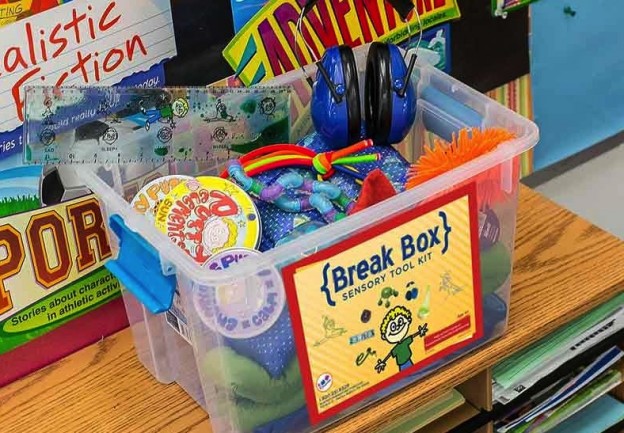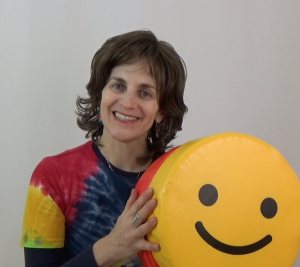
Resources, Special Education
How to Create a Break Box to Stimulate your Child with Special Needs
Sometimes my kids get the blues. Sometimes I get the blues. One of my favorite storybooks about defeating the blues is the Happiness Box. It’s a story about a boy who never seems to be happy until one day his parents give him a huge empty refrigerator box that they call the Happiness Box. The only rule is that he is to have only happy thoughts when he’s inside the box. Well, this all works out great until one day he has to go to camp and cannot take his oversized box with him. He finally realizes his happiness box is simply inside his own head! I have often thought about this story and wished we could all realize that not only is our Happiness Box inside each of our heads, but also in actuality, so is our BREAK Box.What’s a BREAK box?
A BREAK box is a box choc full of great fidgets, heavy work tools, calming items and much more to awaken, integrate and stimulate the senses. It can be used as a preventative means toward warding off meltdowns or aggression. It can also be used during breaks to re-energize and alert children. Although it is used widely in the classroom, it can also be used in a home, clinic, and waiting room or just about anywhere you find people! Even the teacher can use a BREAK box in a center with several children at once, so that after the break everyone is back on task. In an ideal world, we all know that our BREAK boxes are really in our heads, but for most of us reaching down into a REAL box filed with goodies is to our senses like a snack is to our stomachs. You can purchase a Break Box or you can select items to fit into one that you personalize.What to Put in the Break Box
A good BREAK box should have:- Tools for heavy work (items for stretching and moving)
- Fine motor (manipulatives for use by the hands)
- Sensory items (items with different textures and feelings) and weighted items (items that are heavy to alert the nervous system).



